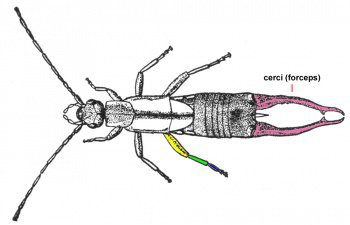aquatic entomology exam 1
1/22
There's no tags or description
Looks like no tags are added yet.
Name | Mastery | Learn | Test | Matching | Spaced |
|---|
No study sessions yet.
23 Terms
ephemeroptera
mayflies
odonata
dragonfies & damselflies
plecoptera
stoneflies
hemiptera
true bugs (giant waterbugs)
early aquatic entomologists:
thomas say
benjamin walsh
theodore gordon
generalized adult insects have:
external skeleton
antennae
sucking or chewing mouthparts
3 pairs of legs
holometabolous
insects grow from larvae to adult
hemimetabolous
insects grow larger, and add new features when they reach adulthood
insect metamorphosis:
egg → niad → subimago → imago
generalized naiad mayfly:
1 tarsal claw
look different from adult
antennae
chewing or sucking mouthparts
abdominal gills
2-3 tails
generalized naiad stonefly:
2 tarsal claws
branched gills
chewing mouthparts
2 cerci

lotic habitats:
flowing water system
perennial (flows continuously throughout the year) or intermittent (flow at certain times, dry at other times)
two zones: erosional & depositional
lentic habitats:
still water system
ex: lakes, ponds, and swamps
three zones:
littoral: plants
limnetic: low light
profundal: no light
macrovore herbivores
vascular plants
filamentous algae
chew food and are obligate
microvore herbivores
suspension feeders
bottom feeders
macrovore carnivores
attack insects, crustaceans, worms, and fish
cannibalistic
chewing or sucking mouthparts
microvore carnivores
omnivore-detritivores - eat plants, animals, and detritus (dead organic matter)
suspension feeders (food particles suspended in water)
zooplankton feeders
non-filter feeders
aeropneustic insects
partially or fully submerged
breathe atmospheric oxygen
have functional spiracles
found in numerous environments
surface air breathers
submerged or partially submerged most of the time
continual contact and tube breathers
tubes and thoracic respiratory horns
tips are unwettable or have unwettable hair
periodic-contact or air storage breathers
live submerged but surface to obtain air
carry their air supply under water
capture an air bubble
beneath folded wings
stored internally in trachea
use body hairs to create a plastron (organ that allows them to breathe underwater w/o coming up to surface)
endophytic breathers
hydropneustic insects
submerged continuously
use dissolved O2
limited by dissolved O2 levels in water
can be cutaneous or spiracular
underwing chamber breathers
predaceous diving beetle
giant water bug
plastron users
water boatman
back swimmer